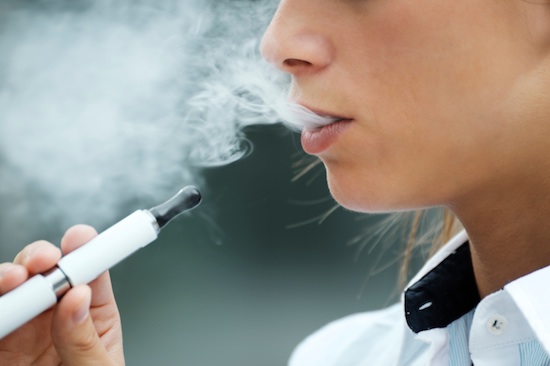In a study appearing in the November 8 issue of JAMA, Adam M. Leventhal, Ph.D., of the University of Southern California Keck School of Medicine, Los Angeles, and colleagues examined associations of e-cigarette vaping with subsequent smoking frequency and heavy smoking among adolescents.

E-cigarette vaping is reported by 37 percent of U.S. 10th-grade adolescents and is associated with subsequent initiation of combustible cigarette smoking. Whether individuals who vape and transition to combustible cigarettes are experimenting or progress to more frequent and heavy smoking is unknown. In addition, because some adolescents use e-cigarettes as a smoking cessation aid, adolescent smokers who vape could be more likely to reduce their smoking levels over time.
This study consisted of an analysis of data from surveys administered to 10th grade students in ten public high schools in Los Angeles County during the fall (baseline for this report) and spring (6-month follow-up) of 2014-2015. Surveys included e-cigarette and combustible cigarette use questions from prior research, which were used to determine baseline vaping and baseline and follow-up past 30-day smoking frequency and heaviness.
Students with complete vaping and smoking data at baseline and follow-up constituted the analytic sample (n = 3,084; 54 percent girls; baseline average age, 15.5 years). The prevalence rates of past 30-day vaping and smoking were low overall. Smoking frequency at follow-up was proportionately greater with successively higher levels of baseline vaping. Similar trends were found for smoking heaviness.
Adjusting for baseline smoking, each increment higher on the 4-level baseline vaping frequency continuum was associated with proportionally higher odds of smoking at a greater level of frequency and heaviness by follow-up. The positive association between baseline vaping and follow-up smoking frequency was stronger among baseline nonsmokers than baseline infrequent and frequent smokers; similar trends were found for smoking heaviness.
“The role of nicotine and generalizability of these results to other locations and ages, longer follow-up periods, and non-self-report assessments are unknown and merit further inquiry. The transition from vaping to smoking may warrant particular attention in tobacco control policy,” the authors write.